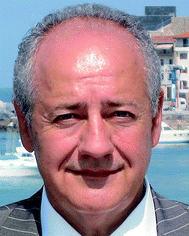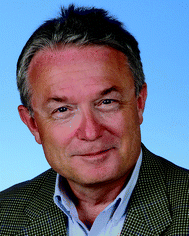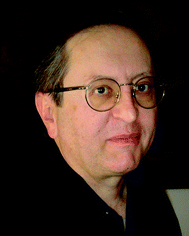International Soft Matter Conference 2010
Juan
Colmenero
a,
Dieter
Richter
b and
Roque
Hidalgo-Alvarez
c
aMaterials Physics Center (CSIC-UPV/EHU) and Donostia International Physics Center, San Sebastian, Spain
bInstitutfürFestkoerperforschung–Neutronenstreuung, Jülich, Germany
cApplied Physics Department, University of Granada, Granada, Spain
 Juan Colmenero |
 Dieter Richter |
 Roque Hidalgo-Alvarez |
On 9th December 1991 in the Nobel lecture given by Pierre-Gilles de Gennes entitled “Soft Matter”, this unforgettable physicist asked “what do we mean by soft matter?”1 Many researchers have tried to answer that question during the past twenty years.
Nowadays, we are sure that soft matter is characterized by multi-component mixtures, large ranges of length and time scales and many interacting degrees of freedom, leading to complex structures, phase behaviour and dynamics. This implies high sensitivity to external fields and ubiquitous and significant non-equilibrium phenomena, and requires an interdisciplinary approach connecting theoretical, computational and experimental physics, physical chemistry, material science and biology. Moreover, we have learnt that biomaterials, colloids, membranes, polymers, surfactants and their composites are good examples of soft matter.
This themed issue contains many of the papers presented orally as plenary or symposium lectures at the International Soft Matter Conference 2010 held in Granada, Spain, on July 5–8, 2010. This event was organized under the auspices of the SoftComp European Excellence Network and was co-sponsored by the Donostia International Physics Center, the Forschungszentrum Jülich, the Spanish Ministry of Innovation and Science and the University of Granada. The conference brought together scientists from all over the world interested in soft matter. A special focus of discussion in this context was the application of soft matter concepts to scientific innovation. In this field, both basic science and a broad range of modern technological applications also encompassing many aspects of soft nanotechnology are closely related. These links were emphasized during the conference, thereby fostering the exchange between academia and industry.
The conference was organized along themes associated with biophysics, colloids, dynamics of complex fluids, membranes, polymers, surfaces and interfaces, self-assembly and soft nanotechnology. The presence of a large number of young delegates, the increasing participation of scientists from backgrounds different to the traditional ones of physics and chemistry and of delegates coming from outside academia, the lively discussions, in particular those at the poster sessions, gave an optimistic view of a field that is growing and changing in many and different ways. Experimental, theoretical and computational techniques first developed for model systems are becoming increasingly relevant for more complex materials while at the same time different areas of soft matter offer new and challenging problems to the community at large.
Thus, the location of the conference in the beautiful town of Granada cannot be the only explanation for the very large attendance to the conference and this is a good omen for the next International Soft Matter Conference, which will be held in Rome, Italy, in September 2013.
This themed issue covers topics ranging from the preparation of soft materials (anisotropic hybrid magnetic particles, bilayer membranes in microfluidics, foams stabilized solely by particles, giant polymersome nanocomposites, LbL-assembly of nanogels and nanofibrils, photodegradable microgels, polyelectrolyte complex micelles and self-assembly of tripeptides) to the analysis of complex structures, phase behaviour and dynamics of soft materials in 2- and 3-dimensions. Also, in this themed issue, special attention is paid to some advanced technologies capable of studying motions on the nanometre scale or to analyze both spatial and temporal dynamical heterogeneity.
Finally, we wish to express our gratitude to all authors who submitted their contributions to this themed issue of Soft Matter.
Reference
- P.-G. de Gennes, Noble Lecture: Soft Matter, 9 December 1991, College de France, Paris, France Search PubMed.
| This journal is © The Royal Society of Chemistry 2011 |
